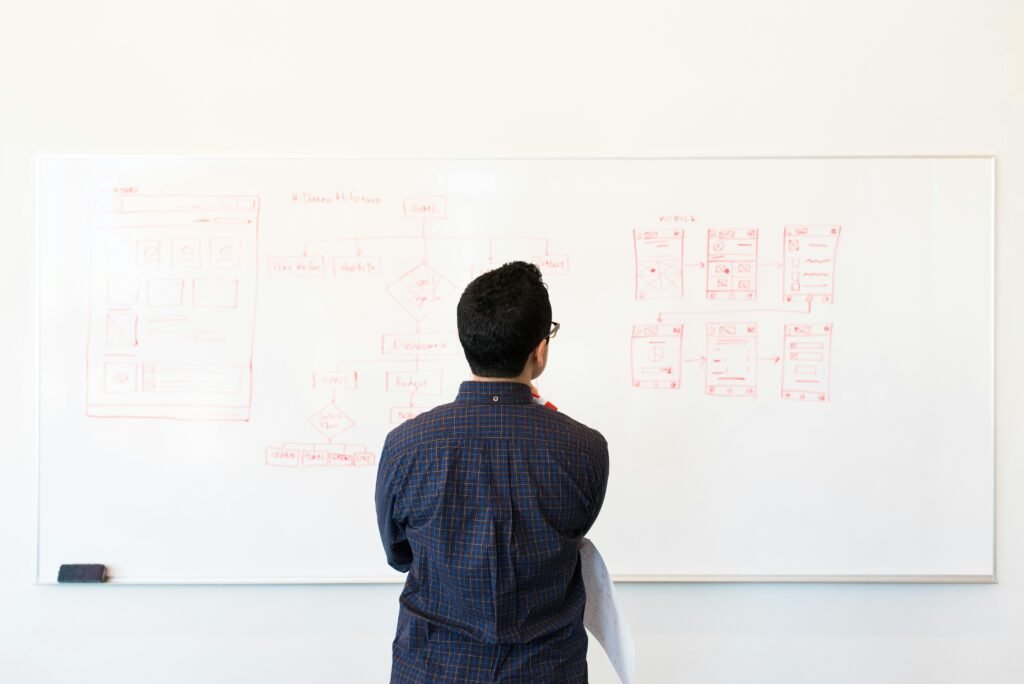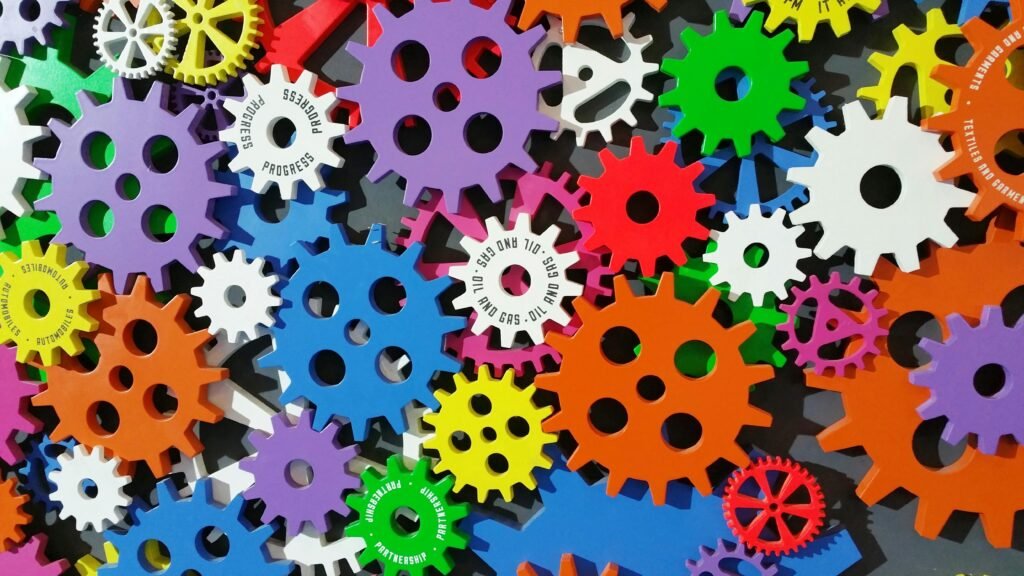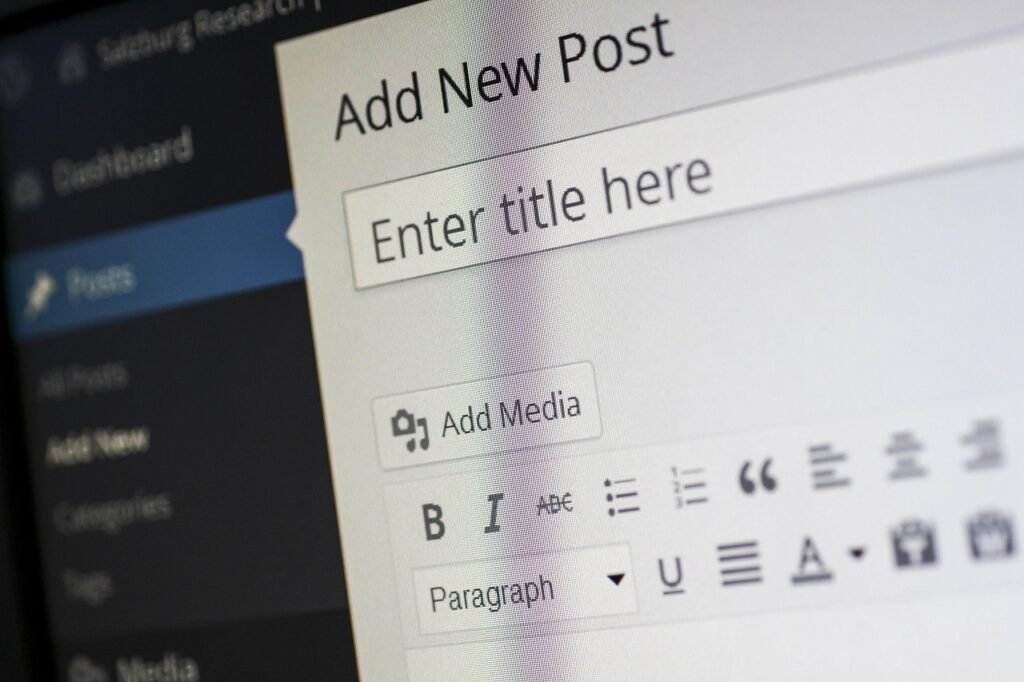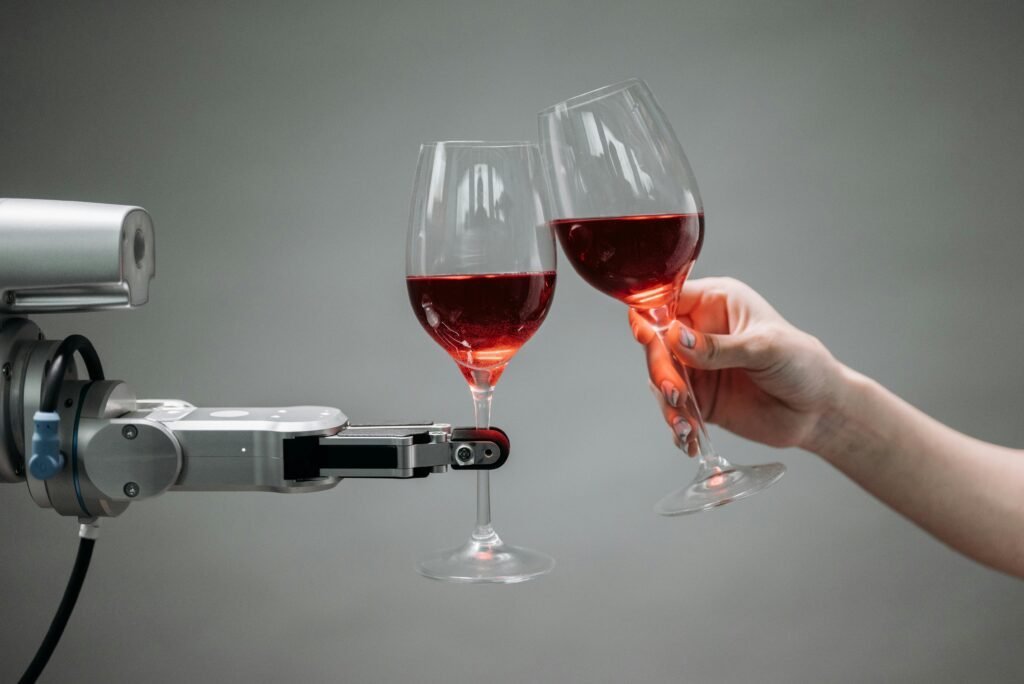Artificial intelligence (AI) is revolutionizing industries across the board, and web design is no exception. Designers and developers alike are discovering how AI can simplify processes, enhance creativity, and create more user-centric experiences. Integrating AI into web design not only saves time but also elevates the overall quality and efficiency of a project. In this post, we’ll explore how AI can be implemented at different stages of the web design process and its benefits.
At the conceptual stage, AI-powered tools can assist designers in generating ideas and discovering new visual trends. Tools like DesignScape and Runway use machine learning algorithms to analyze design patterns, suggesting layouts, color schemes, and styles based on user inputs or trending designs. With such tools, designers can create mood boards, explore variations, and even predict which design elements will engage users more effectively.

1 .Streamlining Design Inspiration and Conceptualization
Artificial intelligence (AI) is revolutionizing industries across the board, and web design is no exception. Designers and developers alike are discovering how AI can simplify processes, enhance creativity, and create more user-centric experiences. Integrating AI into web design not only saves time but also elevates the overall quality and efficiency of a project. In this post, we’ll explore how AI can be implemented at different stages of the web design process and its benefits.
At the conceptual stage, AI-powered tools can assist designers in generating ideas and discovering new visual trends. Tools like DesignScape and Runway use machine learning algorithms to analyze design patterns, suggesting layouts, color schemes, and styles based on user inputs or trending designs. With such tools, designers can create mood boards, explore variations, and even predict which design elements will engage users more effectively.
Moreover, AI can analyze millions of websites and pull data from successful designs to recommend the best practices for your niche. This capability allows web designers to quickly get inspiration from designs that work, reducing the trial-and-error phase and accelerating the conceptualization process. By leveraging these AI tools, web designers can create more innovative and impactful designs with greater confidence.
Artificial intelligence (AI) is revolutionizing industries across the board, and web design is no exception. Designers and developers alike are discovering how AI can simplify processes, enhance creativity, and create more user-centric experiences. Integrating AI into web design not only saves time but also elevates the overall quality and efficiency of a project. In this post, we’ll explore how AI can be implemented at different stages of the web design process and its benefits.
At the conceptual stage, AI-powered tools can assist designers in generating ideas and discovering new visual trends. Tools like DesignScape and Runway use machine learning algorithms to analyze design patterns, suggesting layouts, color schemes, and styles based on user inputs or trending designs. With such tools, designers can create mood boards, explore variations, and even predict which design elements will engage users more effectively.

2. Enhancing User-Centric Design with Predictive Analytics
User experience (UX) is a critical component of web design, and AI has the power to make it more personalized. One of the major ways AI can enhance UX is through predictive analytics. AI tools can analyze user behavior—such as page views, bounce rates, and time spent on specific sections—to provide real-time insights into what users are looking for. Tools like Hotjar and Google Analytics AI Insights provide automated reports on user behavior, helping designers refine website layouts to optimize for conversions, engagement, or any other key performance indicators (KPIs).
AI can also predict user preferences based on their interaction history, enabling designers to create adaptive layouts. For example, a website could dynamically change based on whether the user prefers a more minimalist interface or a feature-rich experience. This level of personalization drives higher engagement and leads to more satisfying user experiences.

3. Automating Routine Design Tasks
Web designers often spend significant time on repetitive tasks like resizing images, generating code snippets, and testing responsiveness across devices. AI can streamline these tasks with tools like Adobe Sensei and Uizard, which can automate mundane processes, giving designers more time to focus on creativity and strategy. Sensei, for instance, helps automate photo retouching and image cropping, while Uizard can convert hand-drawn sketches into fully functional design prototypes.
Similarly, AI-powered grid generators and responsive design tools can automate layout creation, ensuring that a website looks good on any device. This automation reduces manual labor and the likelihood of human error, helping web designers meet deadlines more efficiently. When routine tasks are handled by AI, designers can spend more time on what truly matters—crafting a user-friendly and visually appealing interface.

4. Optimizing Content Creation with AI Writing Tools
Content is an integral part of any website, and AI tools can also assist in creating and optimizing it for search engines. Tools like Jasper AI and Frase generate SEO-friendly content by analyzing the most successful articles related to specific keywords and topics. These tools not only suggest improvements but can also write draft blog posts, product descriptions, or landing page content. This can be particularly useful when designers need to populate a website quickly without sacrificing quality.
Additionally, AI writing assistants can enhance UX by generating personalized content recommendations based on user data. For example, dynamic content blocks can suggest articles, products, or services relevant to a specific user’s browsing history. This form of AI-driven content curation keeps users engaged, resulting in longer session times and improved SEO performance.

5. AI-Powered Testing and Optimization
The final phase of any web design process involves testing and optimization, and AI is making significant strides here. Tools like Google Optimize and Optimizely use machine learning to run A/B tests more effectively. By analyzing user data in real time, AI can help determine which design variations perform best, thereby minimizing the guesswork involved in optimization.
AI can also detect potential usability issues before a site goes live. For instance, Lighthouse, an AI-powered tool developed by Google, can analyze a website’s performance, accessibility, SEO, and best practices. This type of testing ensures that the website meets industry standards and provides an optimal experience across different devices and browsers. With AI continually monitoring performance, designers can implement data-driven improvements quickly and efficiently, ensuring that the website evolves with user needs and preferences.
Conclusion
Incorporating AI into the web design process offers immense benefits. From streamlining the ideation phase and enhancing user experience with predictive analytics to automating routine tasks and optimizing content, AI is transforming how designers approach their work. AI-driven testing and real-time optimization further ensure that the website stays relevant and engaging over time. As these technologies continue to evolve, web designers who embrace AI will be better equipped to deliver innovative, high-quality digital experiences.
By leveraging AI, designers can not only improve efficiency but also push the boundaries of creativity and user satisfaction. Whether you are a seasoned designer or just starting out, integrating AI into your workflow will undoubtedly lead to more successful and impactful web design projects.



